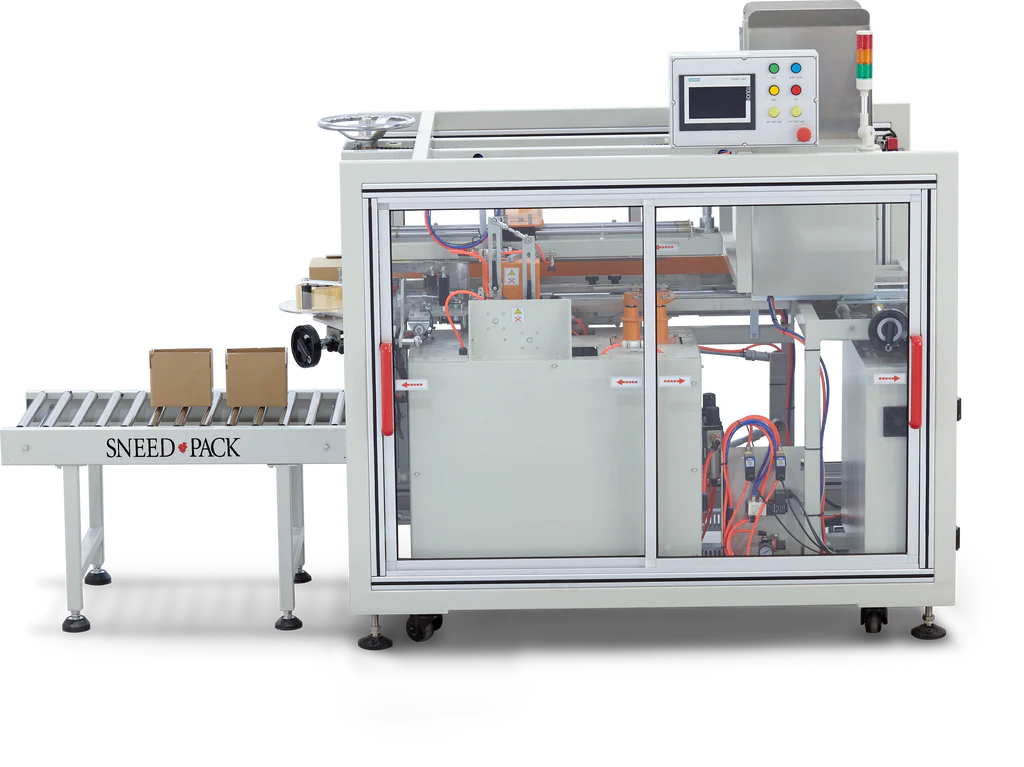In today’s fast-paced manufacturing and packaging industries, efficiency and precision are paramount. Case erectors are crucial in streamlining the packaging process, ensuring that boxes are consistently, accurately formed, and ready for product filling.
However, with a wide array of case erector models and features, selecting the right one for your needs can take time and effort. This guide outlines simple steps to help you navigate this decision-making process, ensuring you choose a case erector that optimizes your operations and meets your unique requirements.
Steps to Choose the Best Case Erector
1. Determine Your Production Volume
- Low Volume: A semi-automatic case erector might suffice for small businesses or startups.
- High Volume: Larger operations will benefit from fully automatic case erectors that can handle high-speed production.
2. Assess Your Case Sizes and Styles
- Standard Sizes: Most case erectors will meet your needs if your operation uses standard case sizes.
- Multiple Sizes: For operations requiring various case sizes, look for a machine with quick changeover capabilities or adjustable settings.
3. Consider the Level of Automation
- Manual: Requires significant labor; suitable for very low-volume operations.
- Semi-Automatic: Reduces labor but still requires some manual intervention.
- Fully Automatic: Best for high-volume production, minimizes labor, and maximizes efficiency.
4. Evaluate the Available Space
- Space Constraints: Measure your available floor space to ensure the machine fits comfortably.
- Compact Models: Opt for compact case erectors if space is limited.
5. Look at Integration with Existing Systems
- Compatibility: Ensure the case erector integrates smoothly with your existing conveyor systems and other packaging machinery.
- Future Expansion: Consider machines that can be easily upgraded or expanded as your business grows.
6. Analyze the Total Cost of Ownership
- Initial Cost: Compare prices of different models but go for more than just the cheapest option.
- Operating Costs: Consider energy consumption, maintenance, and the cost of spare parts.
- ROI: Calculate the return on investment based on labor savings and increased efficiency.
7. Check for User-Friendly Features
- Ease of Use: Machines with intuitive controls and easy setup reduce training time.
- Maintenance: Look for models that are easy to maintain and have accessible parts for quick repairs.
8. Verify Reliability and Support
- Brand Reputation: Choose reputable brands known for reliable machines and good customer service.
- Technical Support: Ensure the manufacturer provides robust technical support and readily available service technicians.
9. Read Reviews and Testimonials
- Customer Feedback: Look for reviews and testimonials from businesses like yours to gauge real-world performance and satisfaction.
- Case Studies: Research case studies to see how the machine performs in various industries.
- Choose the Best: Ensure you select the perfect seller for case erectors to avoid fraud or defective products. They should also provide excellent after-sale support, like Bestpack, which offers the best support and solutions tailored to your needs.
10. Request a Demo or Trial
- Hands-On Evaluation: Request a demo or trial period to see the machine in action whenever possible.
- Performance Verification: Assess the machine’s performance in your specific production environment before making a final decision.
Conclusion
Choosing the best-case erector for your business involves carefully assessing your production needs, space, budget, and growth plans. By following these simple steps, you can ensure that you select a machine that not only enhances your operational efficiency but also provides a good return on investment.
Consider user feedback, seek expert advice, and test the machine in your environment to make a well-informed decision. With the proper case erector, you can streamline your packaging process, reduce labor costs, and improve productivity.

